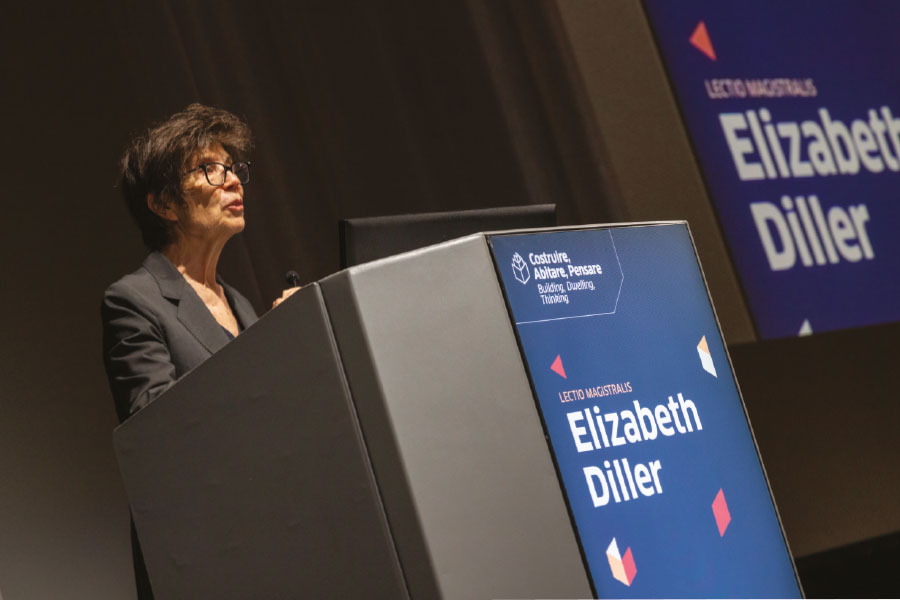THE speaker at the Europauditorium event in the BolognaFiere Congress Centre was American architect Elizabeth Diller, partner at Diller Scofidio + Renfro (DS+R), who opened Cersaie’s ‘Building, Dwelling, Thinking’ cultural programme with her keynote lecture.
The conference began with welcoming remarks from Filippo Manuzzi, chairman of the Confindustria Ceramica Promotional Activities and Trade Fairs Commission, who noted that Cersaie is not only an opportunity to exhibit and promote products but also a place to engage with the wider world of construction. ‘That’s why we organise in-depth discussions on architectural themes. We love architecture and hope these talks will help you appreciate it even more.’
Elizabeth Diller was introduced by architectural historian Fulvio Irace, who described her as an unpredictable architect, known for her ability to challenge conventions and avoid well-trodden paths, and for the clarity with which she approaches each new project, treating it as a challenge to be resolved with an eye to the future, says Cersaie.
This was evident in the breadth of the projects she presented, which also reflect her highly unorthodox cultural background influenced above all by just three or four people, including her partner in life and work Ricardo Scofidio, says Cerasie.
In her lecture, Elizabeth discussed the origins and design processes behind her best-known projects, most notably the High Line, the 2.3-kilometre-long urban park built on a disused railway line in New York which transformed a run-down area destined for demolition into a thriving, economically vibrant neighbourhood, says the company. ‘Every good action for the local population must also bring an economic benefit to the city as a whole,’ she said. She described the park as ‘a subconscious space that doesn’t feel real, where the landscape is brought to life by natural vegetation introduced into the area’s various microcosm’.
www.cersaie.it/en










